Zsanett Szirmay turns cross-stitch patterns into musical scores
Hungarian design student Zsanett Szirmay has transferred folk embroidery patterns onto strips for a punched card music box, which plays the traditional motifs as sounds (+ slideshow).
For her Soundweaving project, Szirmay used a laser-cutting machine to create holes along lengths of fabric, forming patterns that mimic old textile motifs from parts of eastern Europe.
The strips of material serve as bands for the music box, translating the patterns into melodies. The punchcards are forced past the 20 teeth of a comb inside the metal music box using a series of cogwheels and a manual crank. When each tooth is caught and released by a corresponding hole, it creates a different musical note.
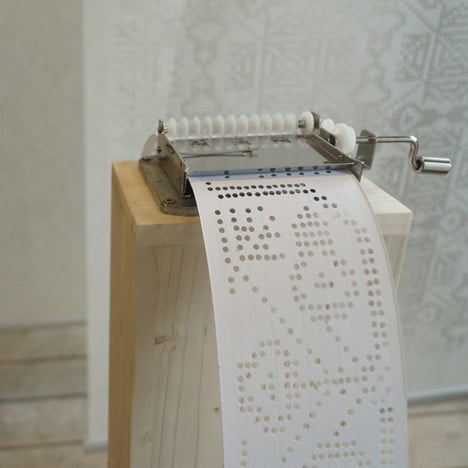
"Soundweaving adds another dimension to traditional embroidery, activating multiple senses and inspiring visitors to interact since anybody to visit the exhibition can try it for themselves," said the designer, who is studying an MA in textile design at the Moholy-Nagy University in Budapest.

Punch cards are already used in weaving machines to program patterns in the same way that they are used in musical instruments, such as barrel organs, to produce music. It was this connection that inspired the project.
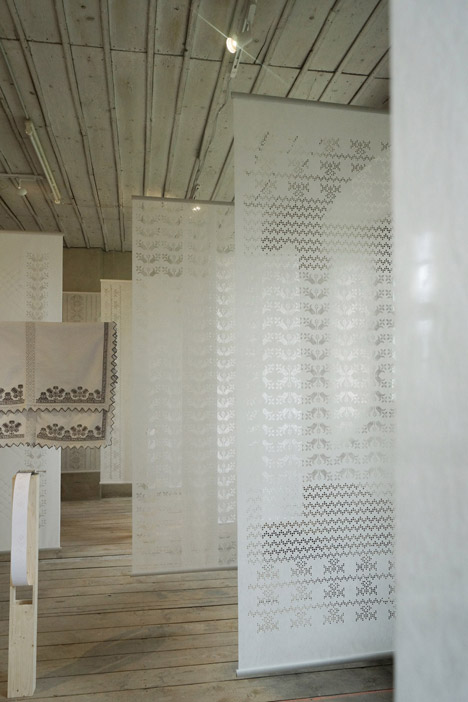
"While I was working in the weaving workshop, I became intensely fascinated by the punchcards and their use in weaving machines," Szirmay told Dezeen. "I recalled that barrel organs with punched tapes in my childhood worked by the same principle."
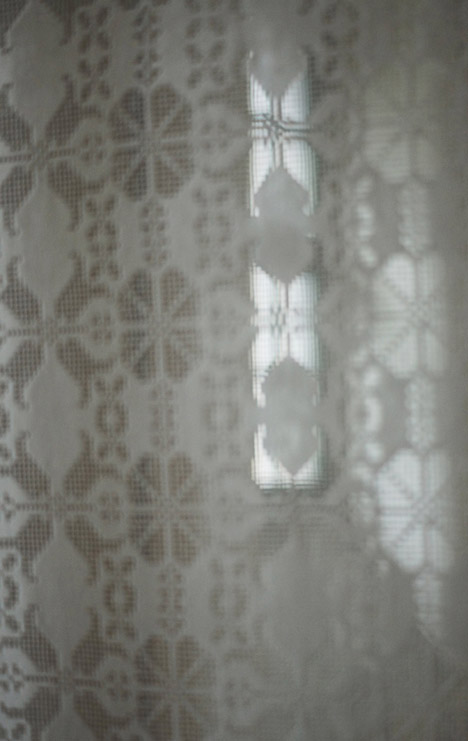
Looking at cross-stitching as a pattern of pixels, Szirmay assigned a note on a musical score to each stitch, manually punching patterns from traditional folk costume bodices or the ends of pillows through the paper and fabric cards.
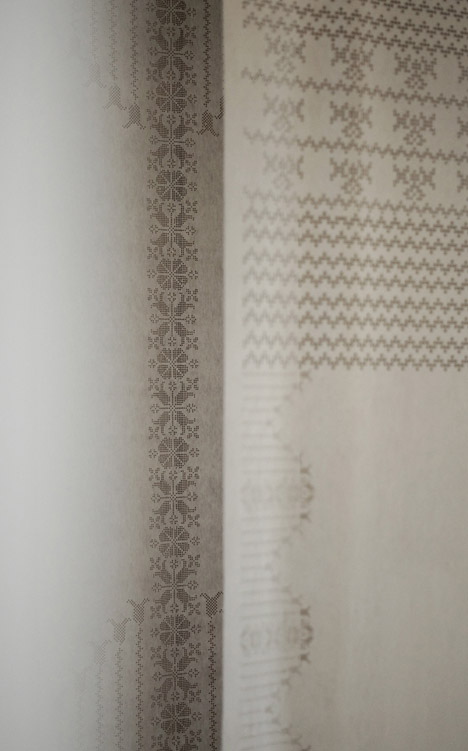
"I used to do folk dancing and wore traditional Hungarian embroidered clothes," the designer said. "Contemplating and taking it a step further, I was curious to find out what cross-stitched patterns might sound like."

The project was first shown at her university's presentation space during Vienna Design Week last September, where larger laser-cut textile pieces were hung vertically in lines around the sound machines.
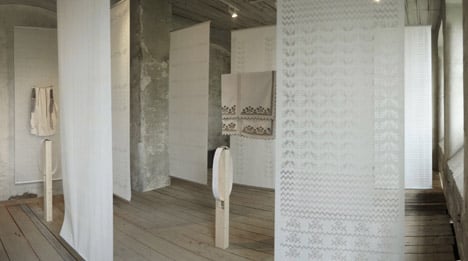
This was to provide a visual reference to the layered character of sound editing software, where individual melodies are displayed separately.
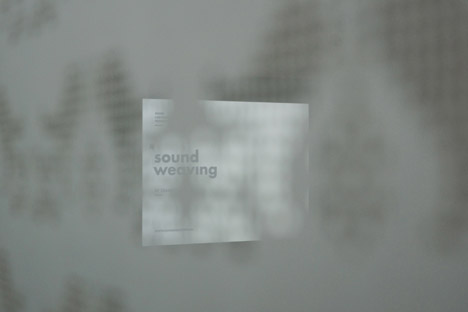
The layers of textiles were offset, mimicking time intervals in music known as a "phase" or "canon".
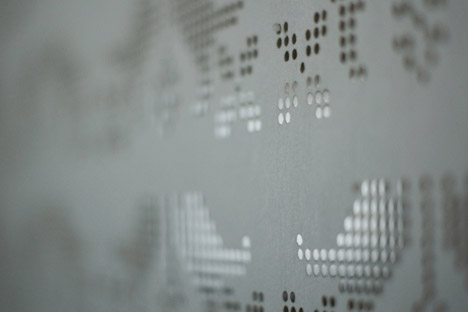
"The principles of composition are similar to textile design. Both areas use the prime form, inversion, retrograde and retrograde inversion," said Szirmay. "I played with these transformations in the creation of the punchcards with the help of musician and composer Bálint Tárkány-Kovács as co-producer."
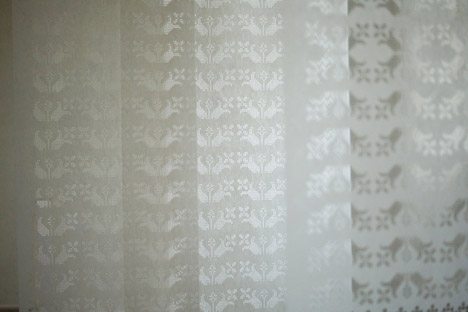
Soundweaving is currently on show at the Heimtextil trade fair in Frankfurt, which concludes today.
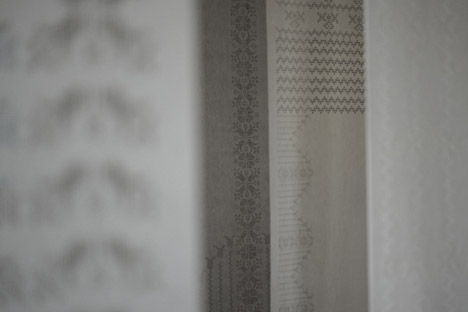
Photography is by Sándor Fövényi.